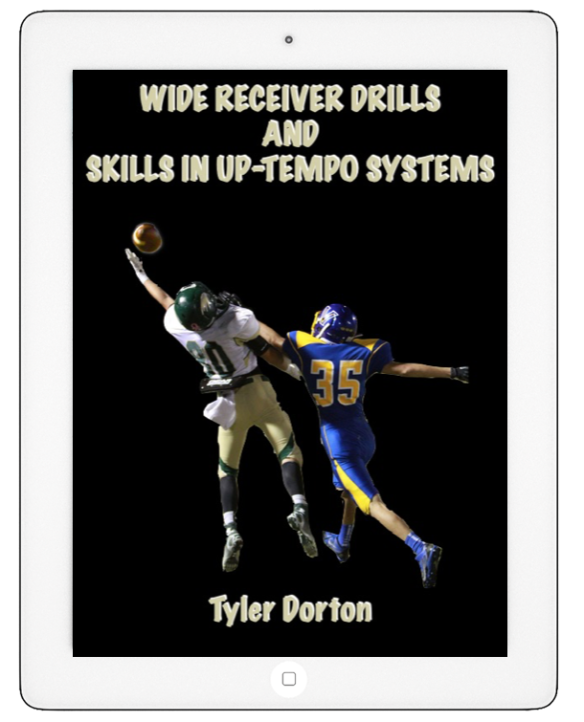Another good one from Coach Mountjoy.
NOTE: O-LINE SPLITS = 18” (CONSISTENT):
INSIDE ZONE TECHNIQUE (DRIVE BLOCK TECHNIQUES):
. COVERED: Take a 6” lead step aiming eyes at playside number. Second step to crotch (do not crossover). Hands at base of shoulder pads.
2. If DLM stretches with you – stay on block and uncovered teammate works up on LBer.
3. If DLM anchors on you – double team with uncovered teammate. Stay on block until wiped off & then work upfield aiming eyes to playside number of LBer.
4. If DLM slants inside – force him to flatten his slant and double team with uncovered teammate. Stay on block until wiped off & then work upfield aiming eyes to playside number of LBer.
. UNCOVERED: Take a 6” lead step aiming eyes at helmet of DLM. Do not cross over on second step.
1. If helmet goes out on your 1st step – 2nd step upfield aiming eyes to playside number of LBer.
2. If helmet stays put – double team (hip to hip) with covered teammate & wipe him off on Lber.
3. If helmet slants inside – get eyes to his playside number. Double team with covered teammate & wipe him off on LBer.
OUTSIDE ZONE TECHNIQUE (REACH BLOCK TECHNIQUES):
. COVERED: Take a 6” lead step aiming eyes at playside arm pit. Second step slightly outside crotch (do not crossover). Inside hand on midline & outside hand under armpit.
2. If DLM stretches with you – stay on block and uncovered teammate works up on LBer.
3. If DLM anchors on you – stay on block with eyes on playside arm pit.
4. If DLM slants inside – force him to flatten his slant by stiff arming him inside. Stay on block until you feel uncovered teammate & then come off aiming eyes to playside number of LBer.
. UNCOVERED: Take a 6” lead step aiming eyes at helmet of DLM. You may crossover on second step.
1. If helmet goes out & you haven’t contacted DLM by 3rd. step – work upfield aiming eyes to playside armpit of LBer.
2. If helmet stays put – shove him over to covered teammate and work upfield aiming eyes to playside armpit of LBer.
3. If helmet slants inside – aim eyes to his playside armpit. Take him over & wipe covered teammate off to LBer.
ZONE RULES:
TEACH “COVERED/UNCOVERED” (TO DETERMINES WHO ZONE BLOCKS
AND WHO MAN BLOCKS).
. IF YOU ARE UNCOVERED (BY A DLM) – ZONE WITH YOUR PLAYSIDE TEAMMATE.
. IF YOU ARE COVERED (BY A DLM) – ZONE WITH YOUR BACKSIDE TEAMMATE (UNLESS HE IS COVERED THEN YOU MUST MAN BLOCK).
NOTE: IF YOUR MAN IS STACKED IN A “TANDEM” – ZONE WITH TEAMMATE WHOSE MAN IS ALSO STACKED.
************************************************************************
DRILLING ZONE BLOCKING:
1. INDIVIDUAL: (bags OR live) “1 vs. 1”
A) INSIDE ZONE
—-1. Drive Block DLM
—-2. Drive Block LBer
B) OUTSIDE ZONE
—-1. Reach Block DLM
—-2. Reach Block LBer
************************************************************************
2. SMAll GROUP: (INSIDE & OUTSIDE ZONE TECHNIQUES – vs. bags OR live)
A) “2 vs. 2” (uncovered man & covered man work vs. a ILer & DLM).
—–1. DLM widens & LBer steps inside of DLM
—–2. DML pinches inside & LBer scrapes outside
—–3. DLM anchors on covered man & LBer moves behind DLM (reading the RB)
************************************************************************
3. LARGE GROUP: (LIVE)
A) “5 ON 5” (Live – NO bags)
————M
—–E–T—–T–E
—–O-O-C-O-O
———–Q
———–R
4-3 = Gives the Center a chance to zone with Guards (on zone TO callside)
———-B—–B
——E—–N—–E
——O-O-C-O-O
————Q
————R
3-4 Gives the Guards a chance to zone with Tackles (on zone TO callside) or Center (on zone AWAY callside)
B) “7 on 7” (Live – no bags)
———–W—-M—–S
——–E—–T—–T—–E
——–O-O-O-C-O-O-O
—————–Q
—————–R
4-3 = Gives the Tackles a chance to zone with the TE’s (on zone TO callside), or the Guards (on zone AWAY callside)
NOTE: The “5 on 5” & “7 on 7” should be your best (“O”) vs. best (“D”). Full speed with no tackling the RB. Benefits of these:
1. COMPETITIVE DRILLS VS. DEFENSE;
2. BLOCKING TECHNIQUES VS. BLOCK REACTIONS;
3. TEACHES TOUGHNESS!!!!!
************************************************************************
4. TEAM (11 vs. 11)
Thanks again to Coach Mountjoy for providing this info. The zone running game is a big part of our offense. Learn mor about it in my iBook, 101+ Pro Style Pistol Offense Plays. Get it for you iPad here.







